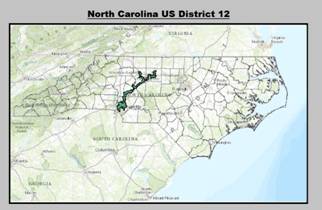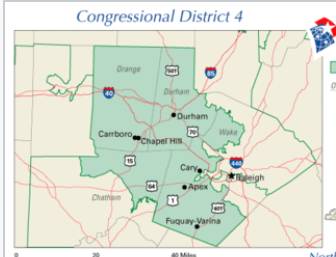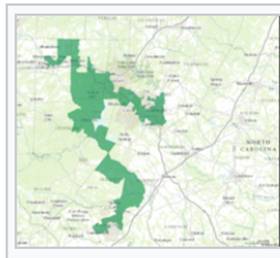
Rat F**ked by David Daley
Review by Dave Gamrath
One-liner: In politics, a “ratfuck” is a “dirty dead done dirt cheap”; this book tells the story of how Republicans ratfucked America, beginning with the 2010 election, to gain control of state-level politics, and with this control, redraw state electoral maps to ensure continued Republican victories until at least the 2020 election when the census process allows new redrawing of electoral maps.
Overview:
This story beings on July 22, 2009, when, still feeling crushed by the 2008 Democrat election victories, Republican Strategist Chris Jankowski read a NY Times article explaining how in election “zero years” most state governors will be in charge as their states draw Congressional and state legislative districts as part of the reapportionment process after the next census. As provided in the Constitution, every state redraws all of its district lines every ten years (after the census). Jankowski saw this as a Republican opportunity to quickly bounce back by from the trashing they took in the 2008 election by mounting an aggressive campaign to flip state legislatures to Republican control, ahead of post-census redistricting, then press the advantage to both redraw congressional and the state legislative lines in GOP favor and thus be able to aggressively advance the conservative agenda. Republican operatives would use the oldest trick in the book – the gerrymander – but in a brilliant and totally modern way. They called the plan REDMAP, for Redistricting Majority Project. For a relatively small investment, REDMAP succeeded wildly and ratfucked America.
Summary:
The term gerrymander comes from 1812, when then Massachusetts governor Elbridge Gerry signed into law a state map tilted dramatically to advantage his party. Partisan gerrymandering has always been a weapon of the parties, but now it has become a much more lethal weapon. Republican Strategist Chris Jankowski raised a mere $30 million to implement REDMAP in the 2010 election, and using advanced analytics, invested this relatively small amount of money strategically throughout the country to win Republican control. Republicans were more successful on multiple fronts: with legal strategy, national coordination, electoral strategy and with mapping experts. After election results in 2010, with Republicans gaining much control, voting districts for US Congress would be determined by:
· Democrats: 44 districts would be determined by Democrats on their own
· Republicans: 193 districts would be determined by Republicans on their own
· Determined by a state Commission: 88
· Determined by both parties: 103
So why is this a big deal? Remember, a political party needs only 218 seats to control the US Congress, and with these 2010 results, with control of electoral maps for 193 districts, Republicans are almost 90% of the way to basically unchallengeable control of Congress. The Cook Political Report estimates that Democrats would have to win the national popular vote by 6% or 7% in order to win the “barest” possible House majority. This, my friends, will be VERY difficult. Proof came in the 2012 election, which was a big year for Democrats: Obama won electoral votes by a 332-206 margin, Democrats won 23 of 33 Senate races and nationwide won 1.4 million more votes, but Republicans still came away with a 33 seat advantage in the House! REDMAP built a firewall against the popular will, and it held strong.
So how does this map gerrymandering work? Simply put, Republican mapmakers packed as many Democrats as possible into very few districts. These Democrat districts won by huge percentages, but that left very few Democrats to vote in the remainder of the state. Using Big Data, and mapping tools such as Maptitude, Republicans used the latest technology to ensure success. These computer models are quite sophisticated. And tricky! They can build districts that look “reasonable” to Democrats today, but take into account forecast changes in demographics that will swing the district soon to Republican. Democrats haven’t understood this because they don’t understand how the data points to changes happening in the near future, with populations changing, the way people are moving, and the way voter opinions are changing.
One example was Ohio. Republicans had the power to draw the 132 legislative districts and the 16 congressional districts, then commandeered a supermajority in the Ohio state House despite losing the aggregate vote! They also won 75% of the US House seats with only 51% of the vote! These types of results were repeated around the country: Republicans gained far more seats than their percent of the vote warranted. Computer modeling showed that the odds against this happening in a “non-gerrymandered” mapping system are 1000 to 1! Republicans asked the right strategic questions at the state level to get the “biggest bang for their investment buck”, then spent their $30 million wisely to win the most control they could. And, sadly, the Democrats, still feeling flush off their big 2008 victory, didn’t respond. And Democrat voters didn’t turn out. The loss of the US Congress for at least a decade, and maybe much longer, was sealed.
This is why Harvard political scientists have found that since 2011 Congress has taken the “biggest leap to the far right” ever. EVER! If a politician doesn’t have competition, they become insulated. They drink the Kool-Aid of their base. It’s why government operates under threat of shutdown and default on every vote of raising the debt ceiling. And its why at the state level, many states push much harder right than their citizenry wants. If a member of Congress has no fear of losing an election because their district has been so effectively gerrymandered, that person can remain ultra-extreme and never compromise, without fear of being voted out of office. In Karl Rove’s words: when you draw the lines, you make the rules (prick). When you have power, you exercise it. When you don’t, you try and remove the other side’s advantage under the cloak of good government. The old conservative GOP has been transformed into a party beholden to ideological zealots without respect for facts, evidence, science or a willingness to compromise.
Every state handles the drawing of new map lines a bit differently. Arizona, Iowa, California, Idaho, New Jersey and Washington all use commissions (and these commission models vary state by state, as does their effectiveness). But the vast majority of states leave redistricting up to some combination of the legislature and the governor, and that means election results matter. Thanks in a large part to Citizens United, the GOP was able to rely on opaque nonprofits funded by “dark money”, supposedly nonpartisan campaign outfits, as well as millions in corporate donations, to raise the $30 million they did to achieve GOP friendly maps throughout the country. Jankowski knew that money goes a lot further at the state level, so that’s where he invested. Also, you can push policy change more effectively off-the-radar on the state level too.
The books’ author David Daley spends much of the book detailing what specifically happened in particular states, both in terms of Republican investment in the election as well as in the gerrymandering of the electoral maps that the GOP did after they took control. In state after state, the process followed a similar path: strategic investment of a relatively small amount of campaign funds for attack ads of the most vicious kinds; Republican election wins and thus local control; gerrymandering of the electoral maps; then future election results giving Republicans far more seats than deserved by the popular vote. Daley detailed how this worked in key states, including Pennsylvania, North Carolina, Michigan, Ohio, Florida, Texas and Wisconsin. Republicans redrew maps to weight seats with “just enough” Republicans to win the district, and packed Democrats into a few districts. These results validate how in our current American democracy, we’ve got the “best government money can buy.” In the summer of 2015, the Republican State Leadership Committee announced that it would commit $125 million – almost twice that that Democrats were merely hoping to raise – to a three-cycle REDMAP 2020 plan designed to defend the GOP chambers and expand deeper into the states they missed in 2020.
Below are a couple images of the outcome of this map gerrymandering, with insane boundaries that work to capture as many Democrats as possible and jam them into one district. Again, the point was to draw map lines to reach out and grab Democrat-leaning neighborhoods and stuff them all together into one district.

Next, North Carolina US District 4 (before and after the redistricting ratfucking):
Before After


After all this redistricting, nationwide there are only between 35-50 somewhat competitive seats for US Congress. The “truly competitive” number is around 20-30 seats. So, when Democrats need to win 32 seats to take the majority back, good luck! Democrats won 1.5 million more votes in 2012 and only picked up 8 seats. Democrats completely missed this dynamic prior to the 2010 election. Republicans have always been better at playing the “long game” than Democrats in two fundamental ways. No. #1, on the judicial side, realizing they needed to stock courts nationwide with partisan GOP judges, and they did this. #2 was this redistricting effort.
This gerrymandering has effectively “killed the middle”. “The only thing in the middle of the road has probably been run over”, as they say in Oklahoma. And when you lose the middle you lose the ability to govern a diverse society.
Daley interviewed many different experts on what Democrats need to do to fight back. Is using better framing to fire up voters, such as “Republicans have stolen the people’s House!” going to work? One opinion is that it won’t be enough. “It doesn’t move voters. There is only one way that’s going to work, and that’s for Democrats to do what Republicans did. Figure out how to win state Houses, lay out the infrastructure. We know it works because Republicans made it work. Use their tactics: go in and beat Republicans in state Houses and state capitals, and then engage in fair redistricting. The only way is to play by their rules so you can change the rules.”
Author Daley has a chapter on Iowa, which has the best functioning state commission system to prevent map gerrymandering. Iowa’s redistricting ease is referred to as a “political miracle”. But Daley describes that the key to Iowa’s functioning is Iowa’s very unique societal respect, I.E., Iowans won’t stand for the BS, and thus the maps stay fair. Thus, it won’t be at all easy to pick up the Iowa commission model and transplant it. In fact, when seemingly solid commissions have been voted into existence it other states, such as Arizona, they came with intensive political fighting and nonsense. But many states have had votes showing that there is very strong public support for an unbiased commission (or similar method) to ensure fair and accurately represented districts.
Towards the end of the book, which came out before the 2016 election, key Republican strategist Jankowski forecast that if Hillary won, so much anger would result that it would seal in the Republican gerrymandered maps for at least another decade, I.E., until the 2030 census. He saw the only way out of this cycle being Hillary losing, thus inspiring Democrats to really turn out the vote in 2018, then being totally pissed that even with a big majority they can’t overturn the Republican House, and this exploding Democrat anger even more, inspiring a massive Democrat turnout in 2020. Let’s hope…
Reviewer Opinion:
This book covers a really important factor in today’s political scene, one that is critical for Democrats to understand and format a successful plan to overcome. It was an easy-to-read, not-to-long and well written book. So read it!
Rating: thumb up.